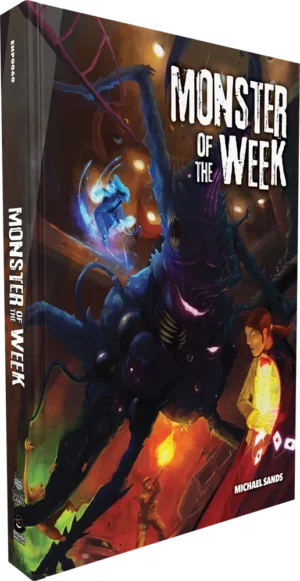Liminal Horror Horror; Dark; Psychological; Collaborative Worldbuilding; GM-less / Cooperative; Rules Lite
Liminal Horror is a rules-lite, survival-horror tabletop roleplaying game focused on modern cosmic horror and investigation. It emphasizes player choice and collaborative storytelling, setting it apart from other horror RPGs with its unique stress and fallout system. Designed for players who enjoy narrative-driven experiences and aren't afraid of delving into the weird and unknown, Liminal Horror distinguishes itself by rewarding players for engaging with the strange and dangerous, rather than punishing them through traditional sanity mechanics. The game's mechanics are streamlined, encouraging improvisation and GM rulings.
Theme and Setting
Liminal Horror plunges players into a modern setting steeped in cosmic horror. The game's title itself evokes the feeling of standing on the threshold of the unknown, a place of transition between the mundane and the terrifying. The setting is contemporary, allowing for easy integration with familiar locations and technologies, but beneath the surface lies a world of hidden horrors and ancient powers. Modules like The Mall and The Bureau exemplify this, placing supernatural threats within everyday environments like shopping malls and government agencies.
Liminal Horror is about normal individuals confronting extraordinary, often inexplicable, threats. The game leans into the inherent ambiguity of such encounters. The provided modules, such as The Bloom, blend familiar scenarios with dark twists, creating a unique and unsettling atmosphere. The core theme revolves around the characters' struggle for survival and sanity in the face of overwhelming cosmic forces.
Core Mechanics and Rules
Liminal Horror uses a rules-lite system inspired by OSR games like Cairn and Into the Odd. Character creation is streamlined, focusing on generating three core stats and developing a character background. Unlike many traditional RPGs, Liminal Horror foregoes skills, instead relying on stat checks (called 'saves') when characters face risky situations.
Combat is handled abstractly, with the outcome determined more by player strategy and GM rulings than by complex rules. Situational modifiers encourage players to think creatively and tactically. For instance, ambushing a monster from an elevated position with sniper rifles will yield a tangible advantage. A key element is the slot-based encumbrance system, forcing players to carefully consider the equipment they carry.
Magic is also present, but unlike traditional systems, Liminal Horror uses a keyword system to generate spells. These spells are open to interpretation and can have unpredictable effects, adding another layer of weirdness and danger to the game. A spell like "Rending Pyramid" requires players and the GM to collaborate on its exact function.
Unique Aspects
One of Liminal Horror's most distinctive features is its stress and fallout system. Instead of traditional sanity mechanics that lead to a downward spiral of mental instability, Liminal Horror uses fallout to represent the psychological corruption that occurs when characters are exposed to cosmic horrors. This can lead to both negative and positive outcomes, potentially boosting stats or granting access to forbidden knowledge. This unique system incentivizes players to actively seek out encounters with the strange and terrifying, creating a dynamic where characters walk a fine line between madness and enlightenment.
The game also eschews traditional character progression. There are no experience points or levels. Instead, characters grow and evolve through their interactions with the world, forming relationships, joining factions, and acquiring knowledge and power through relics and magic. The combination of stress, fallout, magic, and relics creates a gameplay loop where characters are constantly changing and adapting to the weirdness around them.
Target Audience and Player Experience
Liminal Horror is targeted toward players who enjoy narrative-driven, collaborative storytelling experiences with a focus on modern horror. It caters to those who prefer streamlined rules and GM rulings over complex mechanics and predefined character classes. The game is designed to encourage player agency and creativity, empowering them to make meaningful choices that shape the story and the world around them.
The player experience is intended to be unsettling and thought-provoking. Players should expect to encounter strange and dangerous situations, make difficult choices, and grapple with the psychological consequences of their actions. The open-ended nature of the game allows for a wide range of playstyles, from gritty survival horror to more fantastical cosmic adventures. Liminal Horror is not about winning, but rather about exploring the darkness and ambiguity of the liminal spaces between worlds.


